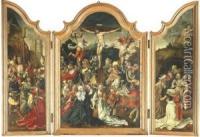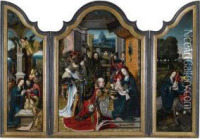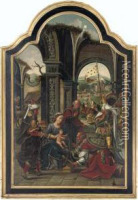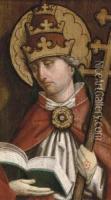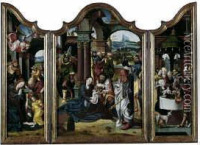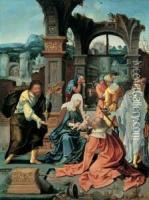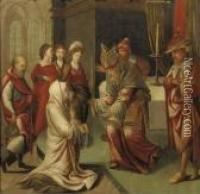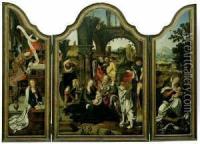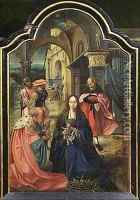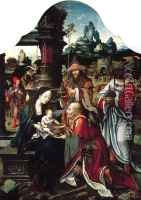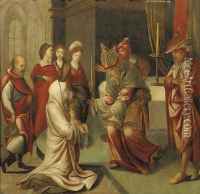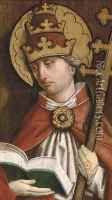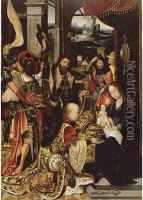Jan van Dornicke Paintings
Jan van Dornicke was a Dutch painter who is considered an influential figure in the Antwerp Mannerists group, active during the early part of the 16th century. Although not much is known about his life, historical records suggest he was born around 1470 and died around 1527. He is sometimes referred to as the Master of 1518, a name derived from the date inscribed on one of his known works.
Van Dornicke's style is characterized by a keen attention to detail, vibrant colors, and an elaborate treatment of clothing and drapery. This style fits within the Mannerist movement, which is known for its artificial elegance and complexity. Mannerism in the Northern Renaissance, where van Dornicke was active, often included intricate compositions and an emphasis on decorative elements.
He was based in Antwerp, which was a major center for art and commerce in the 16th century. It is believed that van Dornicke ran a large workshop and had numerous pupils and assistants. One of his most famous pupils was his stepson, Pieter Coecke van Aelst, who married van Dornicke's daughter after his death and continued the family workshop. Coecke van Aelst went on to become a prominent figure in Northern Renaissance art and a master in his own right.
Jan van Dornicke's works include altarpieces, religious panels, and portraits. However, few works have been definitively attributed to him due to the lack of signed or documented pieces. Despite this, art historians have been able to attribute a small body of work to van Dornicke based on stylistic analysis and historical documentation. These works continue to be appreciated for their contribution to the development of Antwerp Mannerism and their role in the larger context of Northern Renaissance art.
